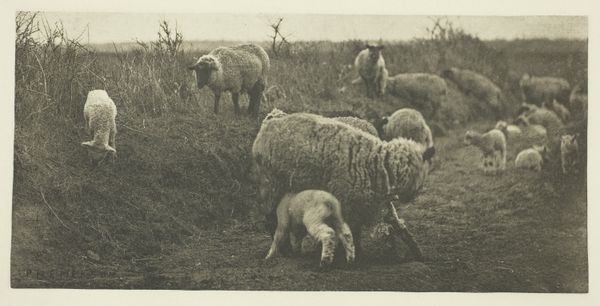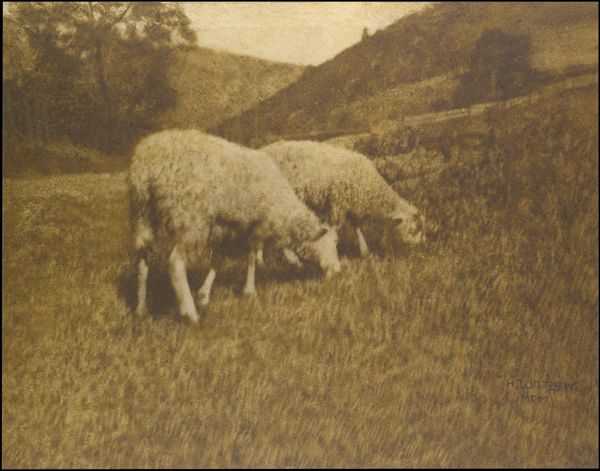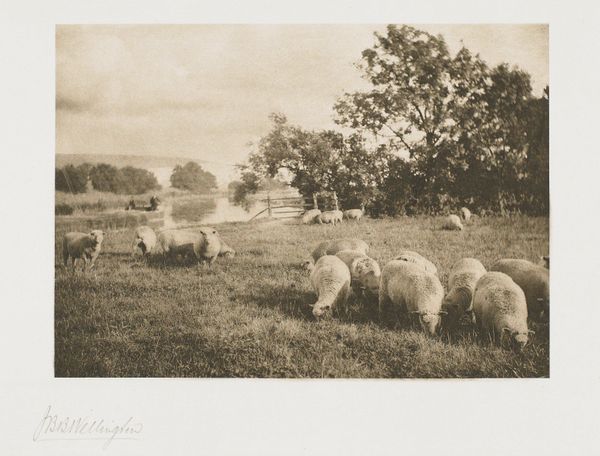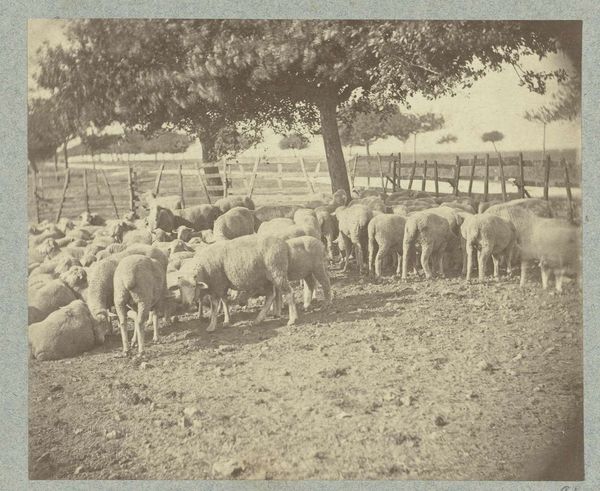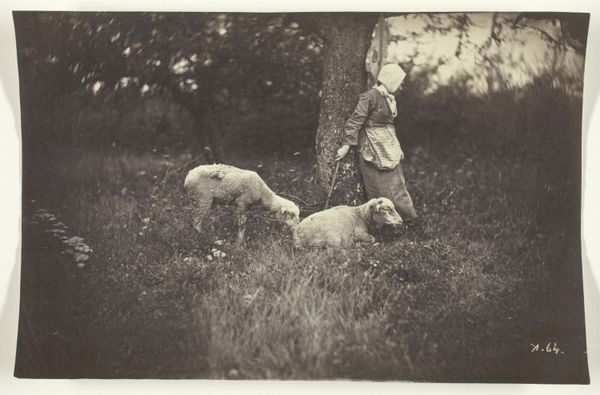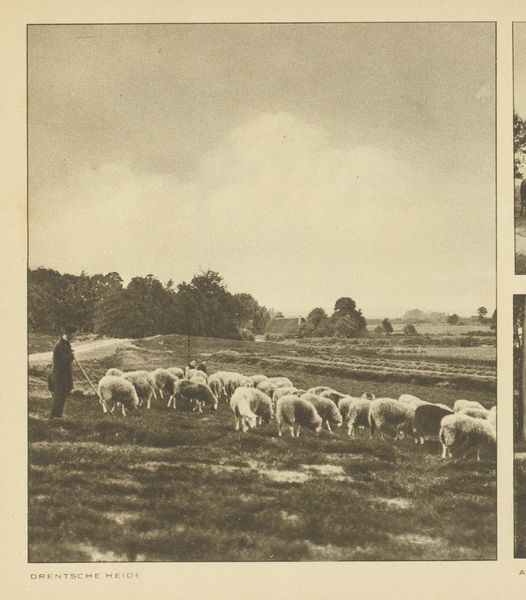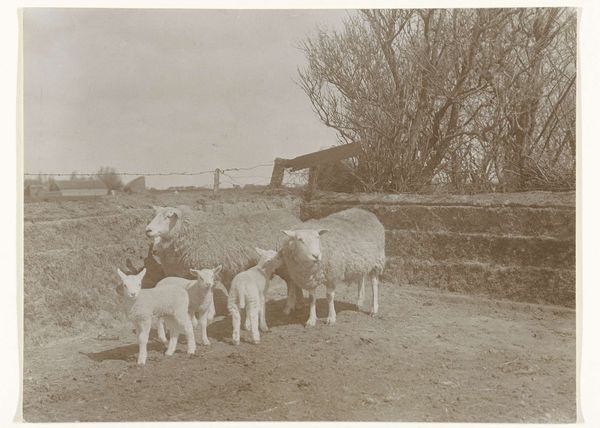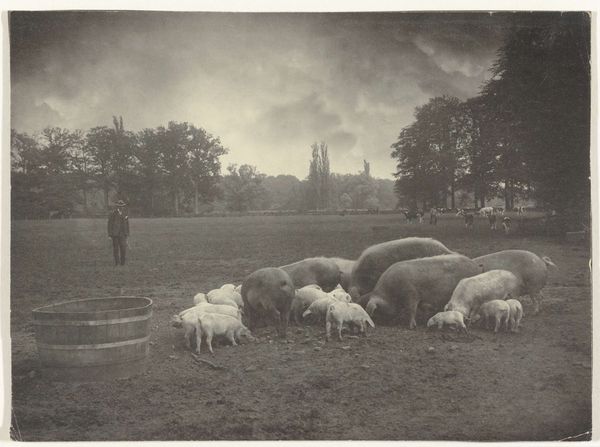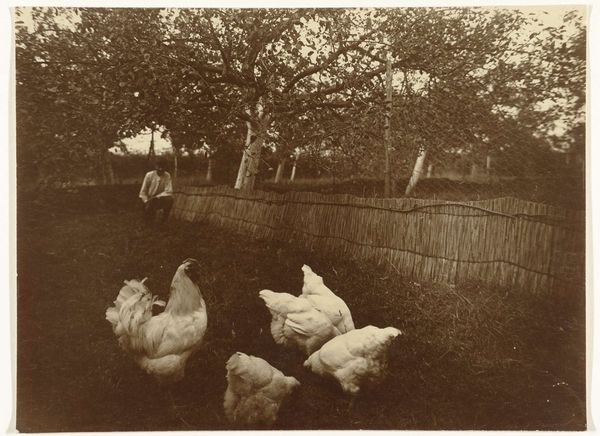
photography, gelatin-silver-print
#
still-life-photography
#
landscape
#
charcoal drawing
#
photography
#
gelatin-silver-print
#
realism
Dimensions: 5 3/4 x 7 7/8 in. (14.61 x 20 cm) (mount)
Copyright: No Copyright - United States
Curator: William B. Post's photograph, titled "No. 5," created sometime in the late 19th or early 20th century. It's a gelatin silver print and it's currently on display here at the Minneapolis Institute of Art. Editor: My first impression is of quietude, almost to the point of melancholia. The sepia tones lend it a timeless, pastoral quality, but with an undeniable stillness. Curator: Indeed. Consider the composition: The deliberate arrangement guides your gaze, doesn't it? The balance created by the positioning of the sheep directs our vision—notice their forms rendered with tonal variation that speaks to both volume and depth. Editor: Sheep, historically, have carried such a symbolic weight— innocence, vulnerability, following the flock... the Christian connotations of the Lamb of God are practically unavoidable here. And even that isolated, third sheep in the background. It's almost ghostly in its obscurity, but it alters the whole symbolic reading for me, giving this a less simplistic interpretation. Curator: Certainly the strategic use of focus shapes our reading as well. Look at the texture captured— particularly in the fleece. And see the sharp delineation slowly dissolve as the image recedes? This application is less about objective realism, and more concerned with subjective experience. Editor: I'm intrigued by the sense of almost archetypal rural life, even bordering on dreamscape; a kind of pre-industrial Arcadia preserved, almost embalmed, through the lens. Post really taps into this collective longing for a simpler past. Curator: And while photography is often hailed as a documentarian medium, here we see Post harnessing its expressive possibilities. It becomes less about capturing a scene and more about evoking an emotional resonance. Editor: It feels profoundly evocative on many levels –visually, emotionally, and perhaps even spiritually. There’s a beautiful sense of nostalgia, but not without an awareness of the passage of time and loss. Curator: Yes, perhaps Post intended a mirror not just to his present, but a meditation on our own temporal existence.
Comments
No comments
Be the first to comment and join the conversation on the ultimate creative platform.
